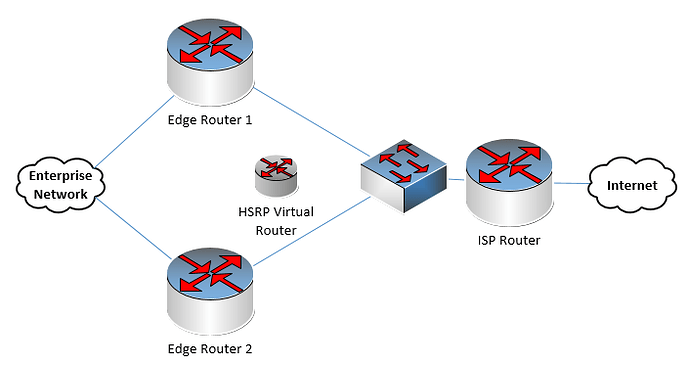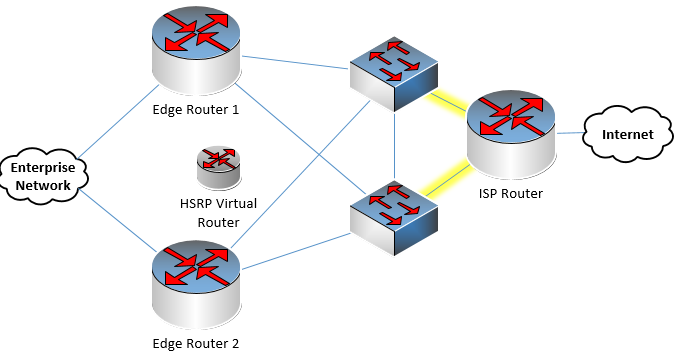Hello Alexander
In order to run a redundancy gateway protocol on two edge routers with a single ISP router, you’d need some infrastructure between the edge routers and the ISP routers like a switch. It is possible, but this would introduce a new single point of failure and this is not desired especially on the edge of the network.
That would also mean that if your edge routers are performing NAT, you would require three public IP addresses, one for each router and one for the virtual IP. The IP of the ISP router would then need to be in the same subnet.
Now you could improve upon this by adding a second switch, but you would then have the problem of needing two connections to the ISP router which complicates things.
So even if you achieve additinoal redundancy with HSRP, in order to avoid single points of failure, you require two switches between the ISP and the edge routers. But, will an ISP give you two links? And will those links be layer 3 links with an IP address for each or layer 2 with the same default gateway for both?
Running OSPF between the HSRP pair and the ISP will not give you any advantages as there is only a single choice for routing here. It would be much more efficient to statically assign routing.
Ultimately, when dual homing etc, the best choice for redundancy is using BGP. It will allow for redundancy in both directions (for outgoing and incoming transmissions to and from the enterprise network) regardless of what kind of single/dual homed or multihomed design you have.
I hope this has been helpful!
Laz

